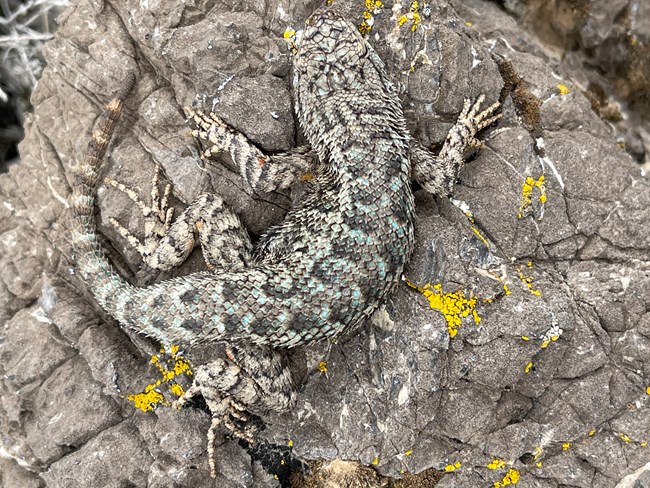Part of a series of articles titled The Midden - Great Basin National Park: Vol. 21, No.1, Summer 2021.
Article
2021 Reptile BioBlitz

NPS Photo by Bryan Hamilton
By Bryan Hamilton, Wildlife Biologist
Reptiles are a diverse group that includes nearly 10,000 species. The vast majority of reptiles (~95%) are snakes and lizards. Nevada supports over 50 species of snakes and lizards, where the desert climate and large, undeveloped, open spaces are ideal habitat. However, reptiles are declining worldwide. Reptiles are ectothermic or cold blooded. Some species lay eggs and other species have live birth. Most reptiles are both predators and prey. Climate change is interacting with these life history traits and affecting the distribution of reptiles across the globe. Invasive plants like cheatgrass are also impacting species such as horned lizards which depend on open habitat to avoid predators. Other reptiles such as Burmese pythons have been introduced outside their native range, causing dramatic changes to ecosystems.
Surveys are important to understand the role of reptiles in ecosystems. However, reptiles can be difficult to find. Many species are rare, well camouflaged, or live underground. This makes it challenging to quantify distribution, population trends, and habitat associations. A BioBlitz is a short-term event to learn about the biodiversity of an area. In Great Basin National Park, we focus on one specific taxa, either plant or animal, each year over 48 hours. This snapshot view helps us look at a variety of habitats over the same time period and helps us better understand what lives in the park.
This year the BioBlitz will focus on reptiles. Join Dr. Bryan Hamilton, Dr. Chuck Peterson, Jason Jones, Meg Horner, Jeremy Westerman, other herpetologists, and Park staff to learn more about snakes and lizards June 11-13, 2021. We will use iNaturalist to document our sightings, which can be in the Park or where you live. One of our main goals is to encourage an appreciation of reptiles all over. Data collected from this year’s BioBlitz will be compared to survey data over the last 20 years. These data will be compared with survey data over the last 20 years. This comparison can help us see if reptiles are changing in response to climate or habitat conditions. Check the Park website for more information. If you would like to be added to the BioBlitz email list e-mail us.
Last updated: February 6, 2024
